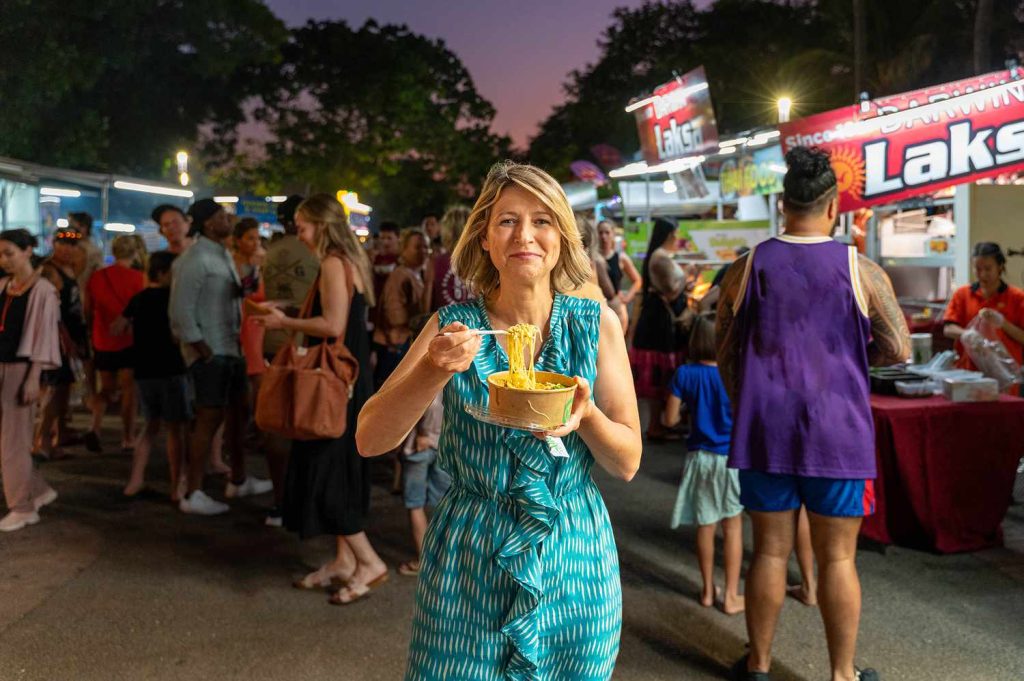Samantha Brown has been a professional traveler for years and as a vacation expert, she has a big secret: traveling doesn't have to be expensive.
In fact, one of the biggest myths is that travel is always extremely expensive, said TV star and host of “Samantha Brown's Places to Love.” Travel + Leisure. Instead, Brown said there are a few steps travelers can take to save on a big trip by looking closer to home and traveling on less popular days or during the out of seasonor even look for little perks in budget hotels (like a pool) that make it as memorable as a luxury option.
“People are under so much pressure to take these big trips that they think, ‘Well, if I’m not going to do it, then I shouldn’t travel at all.’ But … my mission as a traveler is to debunk this myth that travel is for the privileged,” Brown said. “It’s not measured in miles, or expenses, or distances traveled.”
Courtesy of Samantha Brown
Brown's advice comes during the the busiest summer for travel recorded. And while costs tend to fluctuate seasonally, the travel expert said she decided to partner with Klarna, which offers payment plans for popular sites like Airbnb or Expedia, to help people manage the cost of a dream trip.
Another way to save money on travel (and avoid the hassle of traveling) is to fly on less crowded days, like Tuesdays or Wednesdays, a trick she uses herself when traveling for her TV show. Choosing off-season destinations can also be easier on your wallet.
“We go to Costa Rica in July, and nobody thinks about Costa Rica in July for the obvious reason: it’s the rainy season. But in July, for three or four weeks, it’s this magical time where the rain stops and you get all the lowest prices, and it’s not crowded… and you kind of have this beautiful place to yourself,” she said. “I think a good thing to do is think about where you want to go in the summer and start planning for the off-season, because it’s going to be half the price.”
Of course, planning a trip isn't just about booking flights and hotels; it's also about making the most of your itinerary. That's why the first thing Brown does when she arrives in a brand-new destination is plan her return so she doesn't have to worry about it during the trip.
“When I come out of the airport, I don’t just look for the baggage claim signs, I look around because most of the time the door you came in is probably the door you’re going to leave,” she said. “And so, pay attention to restaurants, amenities, notice if it takes you 30 minutes to get through customs. Now you have all that information when you come back.”
Then, when she arrives at her hotel, it's time to explore the neighborhood.
“Where’s the deli? Where’s the little corner store? Where’s the coffee shop? Where can we get groceries for our room? What’s the nice little walk? What’s the park?” Brown said. “I always want to sit down somewhere quiet…because a lot of times, especially when you’re out and about during the day…you don’t want to go from menu to menu or restaurant to restaurant. You just want to know.”
And while travel equipment It can sometimes be a big help, Brown said, but often you don't need a lot of purpose-specific items to fill your luggage. Instead, she advised using household items like an oven mitt to hold a curling iron or to wrap jewelry in a T-shirt.
“I think the idea of having to buy so many things for our trip really cuts into our travel budget,” Brown said. But there is one exception: “You have to have really good shoes, that's something that everybody should buy at a discount, good walking shoes.”


